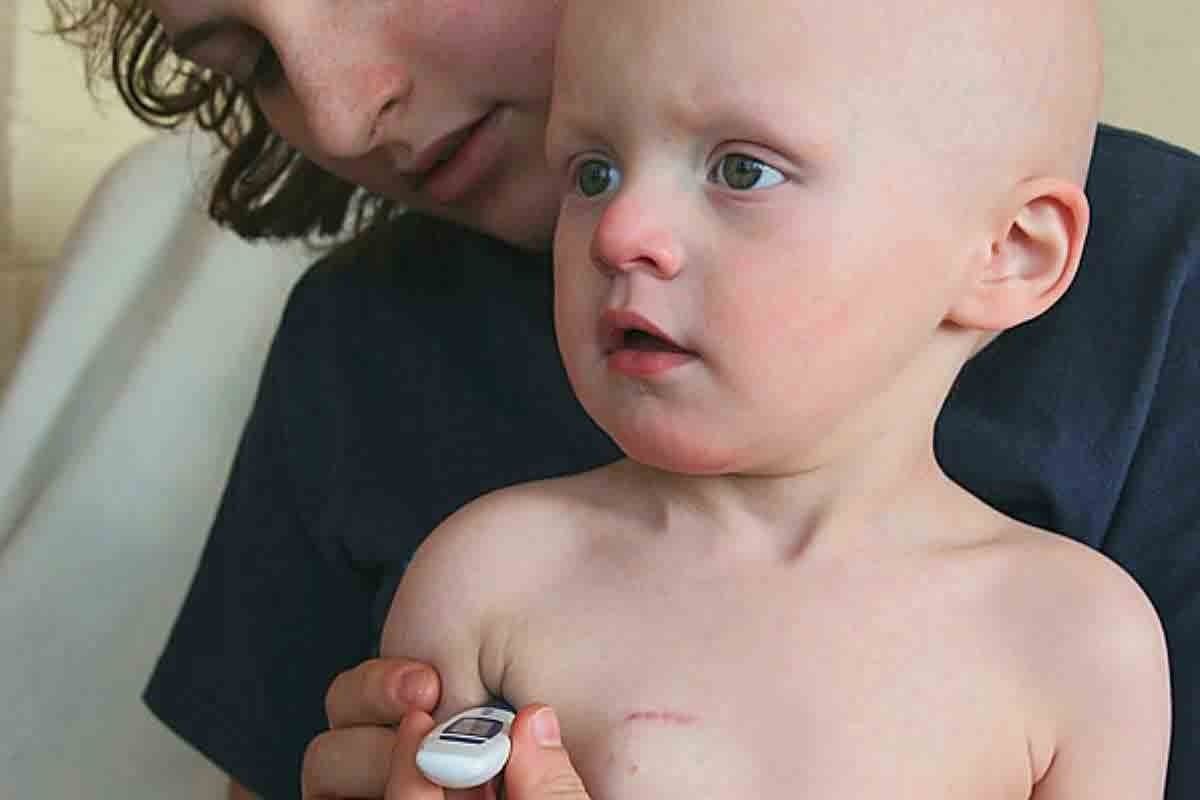Last Updated on November 26, 2025 by Bilal Hasdemir

Radiologists are key in finding diseases with imaging tech. But, many don’t know their role in surgery. Traditionally, radiologists do not perform surgery. They use imaging to help find and guide treatments. Discover can radiologist perform surgery, what interventional radiologists do, and how their expertise supports minimally invasive care.
There’s a special part of radiology called interventional radiology. Specialists use image guidance for minimally invasive procedures. These can be a better choice than surgery, with less risk and faster healing.
Key Takeaways
- Radiologists mainly find diseases with imaging tech.
- Interventional radiologists do minimally invasive procedures guided by imaging.
- These procedures can be a good alternative to traditional surgery.
- Minimally invasive treatments often have fewer complications and quicker recovery.
- Liv Hospital offers leading-edge, patient-centered care in interventional radiology.
The Role of Traditional Radiologists in Healthcare

Traditional radiologists use imaging technologies to diagnose diseases. They are key in patient care, helping doctors make treatment plans.
Diagnostic Imaging Expertise
They are experts in reading images from X-rays, CT scans, MRI, and ultrasound. Their skills help find many health issues, like bone fractures and tumors.
A study in the Journal of the American College of Radiology highlights their importance. It says their expertise is vital for using imaging technologies well.
“The radiologist’s role is not just to interpret images but to be an integral part of the clinical team, providing insights that guide patient management.”
Types of Imaging Technologies Used
Traditional radiologists use many imaging tools for diagnosis. These include:
- X-rays: Good for finding bone fractures and lung problems.
- CT scans: Give detailed images of the body, useful for complex conditions.
- MRI: Shows soft tissues clearly, great for neurological and musculoskeletal issues.
- Ultrasound: Uses sound waves to see internal organs, often used in pregnancy and gallbladder disease.
| Imaging Technology | Primary Use | Benefits |
| X-ray | Diagnosing bone fractures, lung conditions | Quick, widely available |
| CT Scan | Diagnosing complex conditions, cancers | Detailed cross-sectional images |
| MRI | Diagnosing neurological, musculoskeletal conditions | High-resolution soft tissue images |
| Ultrasound | Obstetrics, gallbladder disease diagnosis | Non-invasive, no radiation |
Limitations of Traditional Radiology
Traditional radiology is very helpful but has some limits. Some conditions might not show up on tests, or images might not be clear. Also, traditional radiologists don’t do surgery; they just diagnose.
It’s important to know the difference between traditional and interventional radiologists. Traditional radiologists focus on diagnosis. Interventional radiologists do procedures guided by imaging.
Understanding Interventional Radiology: A Specialized Field

Interventional radiology has changed medicine a lot. It offers new ways to diagnose and treat health problems. This field uses small procedures that help patients heal faster and feel better sooner.
Definition and Scope of Interventional Radiology
Interventional radiology uses advanced imaging to guide small procedures. An interventional radiologist can do many treatments, like angioplasty and biopsies, without surgery. This field mixes imaging with treatments, making it key in healthcare today.
This field treats many conditions, like vascular diseases and cancer. It uses imaging to precisely target areas in the body. This makes treatments safer and more effective.
Historical Development of the Specialty
Interventional radiology started in the mid-20th century. Radiologists began using small techniques back then. New imaging and tools have made this field grow a lot.
Today, interventional radiology is its own special area in medicine. It has its own training and certification. The field keeps getting better, helping patients more and more.
The Difference Between IR and Diagnostic Radiology
Interventional radiology and diagnostic radiology are different. Diagnostic radiology makes images to help diagnose. But interventional radiology uses images to do treatments.
An interventional radiologist needs to know how to read images and do procedures. This shows how important interventional radiology is. It offers treatments that are both effective and gentle on the body.
Can Radiologists Perform Surgery? Clarifying Common Misconceptions
It’s important to know what radiologists can do, like if they can do surgery. This question comes up because medical fields are changing. Also, the tasks doctors do are getting more complex.
Defining “Surgery” in Medical Context
In medicine, surgery means doing operations on the body. This can include making cuts or using tools inside the body. It’s often done to fix a problem.
Surgery can be big or small. Big surgeries need big cuts. Small surgeries use tiny cuts and special tools.
The Distinction Between Traditional Surgery and Minimally Invasive Procedures
Big surgeries take a long time to heal because they hurt more tissue. Minimally invasive procedures are different. They use special tools through small cuts or body openings. This hurts less and heals faster.
Interventional radiologists are experts at these small surgeries. They do things like fix blood vessels and take tissue samples.
Legal and Professional Scope of Practice
What radiologists can do is set by rules and groups. They can do some surgeries that use images to guide, but not all surgeries. Their main job is not to do big surgeries.
| Procedure Type | Performed by | Characteristics |
| Traditional Surgery | Surgeons | Large incisions, longer recovery |
| Minimally Invasive Procedures | Interventional Radiologists | Small incisions, guided by imaging |
In short, radiologists, like interventional radiologists, are key in doing small surgeries. But they don’t do big surgeries. Knowing the difference is key for doctors and patients.
What Does an Interventional Radiologist Do?
Interventional radiologists lead in new treatments, using imaging to guide their work. They do both diagnosis and treatment.
Typical Workflow and Patient Interactions
Every day, interventional radiologists face a variety of tasks. They start by looking over patient cases and imaging results. Then, they plan the best treatments.
Talking to patients is a big part of their job. They explain procedures, risks, and what to expect. This helps patients understand their care.
They work with other doctors to give the best care. They talk to referring doctors and review patient histories. This helps avoid any problems.
Collaborative Role in Treatment Planning
Interventional radiologists are key in planning treatments. They offer a less invasive option for many patients.
They work with surgeons and oncologists to create treatment plans. This ensures patients get the right care for their needs.
Emergency and On-Call Responsibilities
Interventional radiologists are often on call for emergencies. They handle urgent cases like bleeding or blockages. Their work can save lives.
They also manage problems from other treatments. Their skill in using imaging is very helpful in these situations.
Common Procedures Performed by Interventional Radiologists
Interventional radiologists do many important procedures. These are key for diagnosing and treating health issues. They are less invasive than traditional surgery, leading to faster recovery times for patients.
Vascular Interventions: Angioplasty and Stent Placement
Vascular interventions are a big part of interventional radiology. Angioplasty and stent placement help open blocked or narrowed blood vessels. Angioplasty uses a balloon to widen the vessel. Stent placement uses a small mesh device to keep it open.
These methods are used to treat PAD and CAD.
| Procedure | Description | Common Uses |
| Angioplasty | Using a balloon to widen a narrowed blood vessel | PAD, CAD |
| Stent Placement | Deploying a stent to keep a blood vessel open | PAD, CAD, preventing vessel re-narrowing |
Embolization Procedures for Various Conditions
Embolization procedures block blood flow to a specific area or organ. They treat conditions like uterine fibroids, liver tumors, and bleeding from trauma. Materials like coils, particles, and glue are used for embolization.
Biopsy and Drainage Procedures
Interventional radiologists also do biopsies and drainage procedures. Biopsies take tissue samples for diagnosis. Drainage procedures remove fluid or abscesses. These are guided by imaging like ultrasound or CT scans.
Knowing what interventional radiologists do helps patients and healthcare providers see their vital role in medicine.
Interventional Medicine: Treating Conditions Without Traditional Surgery
Interventional medicine has changed how we treat many health issues. It offers new ways to avoid traditional surgery. This field aims for less invasive methods that cut down recovery time and risks.
Advancements in Interventional Medicine
Interventional radiology has been key in this change. It uses X-ray, ultrasound, and MRI to do precise procedures. This way, doctors can target the right area directly.
Peripheral Vascular Disease Management
Interventional medicine has greatly helped with peripheral vascular disease (PVD). PVD narrows or blocks blood vessels outside the heart. This can cause pain, limited movement, and even gangrene if not treated.
Doctors use angioplasty and stenting to fix this. Angioplasty uses a balloon to widen the narrowed vessel, and stenting places a mesh tube to keep it open.
Interventions for Kidney and Liver Conditions
Interventional medicine also treats kidney and liver issues well. For example, percutaneous nephrostomy helps with urinary tract blockages. Transjugular intrahepatic portosystemic shunt (TIPS) helps with liver disease by reducing pressure.
“The use of interventional radiology in managing kidney and liver conditions has significantly improved patient outcomes, reducing the need for more invasive surgical interventions.” – Medical Expert, Interventional Radiologist
Treating Venous Disorders and Deep Vein Thrombosis
Venous disorders, like deep vein thrombosis (DVT), also benefit from interventional medicine. DVT is a blood clot in deep veins, usually in the legs. If not treated, it can cause serious problems, like pulmonary embolism.
Doctors can dissolve the clot with thrombolysis to improve blood flow. They might also use a vena cava filter to stop the clot from reaching the lungs.
Interventional medicine keeps evolving, making care better for patients by avoiding traditional surgery.
Interventional Radiology in Cancer Treatment
Interventional radiology is key in cancer treatment. It offers less invasive options than traditional surgery. This field uses imaging and advanced technologies to target tumors, reducing the need for big surgeries.
Tumor Ablation Techniques
Tumor ablation kills cancer cells with heat, cold, or chemicals. Radiofrequency ablation (RFA) and microwave ablation (MWA) are used for liver, kidney, and lung tumors. A study in the Journal of Clinical Oncology found RFA worked for 97% of early-stage liver cancer patients.
“Ablation techniques are great for patients who can’t have surgery or have cancer back,” says Medical Expert, a top interventional radiologist. “These methods are precise and effective, making them a good choice for treating cancer.”
Chemoembolization and Radioembolization
Chemoembolization and radioembolization deliver cancer-fighting agents directly to tumors. Chemoembolization injects drugs into the tumor’s arteries and then blocks the blood supply. Radioembolization uses tiny radioactive beads to target tumors.
- Chemoembolization is used for liver cancer and can improve survival rates.
- Radioembolization treats liver tumors and delivers radiation with little damage to nearby tissue.
Palliative Interventions for Symptom Management
Interventional radiology also helps in palliative care, easing symptoms of advanced cancer. Procedures like paracentesis and thoracentesis relieve discomfort from fluid buildup. Celiac plexus neurolysis can also help with pain in pancreatic cancer patients.
The American Cancer Society says, “Palliative care is vital in cancer care, focusing on symptom relief and stress.” Interventional radiologists play a big role in this, improving the lives of cancer patients.
In summary, interventional radiology brings new solutions to cancer treatment. It ranges from tumor ablation to palliative care that eases symptoms. As it grows, it will be more important in fighting cancer.
Becoming an Interventional Radiologist: Training and Career Path
To become an interventional radiologist, one must go through tough medical training and fellowship programs. This field needs a solid educational base, clinical skills, and a dedication to learning more.
Educational Requirements and Fellowship Training
The path to becoming an interventional radiologist starts with a good education. First, you need a bachelor’s degree. Then, you must complete four years of medical school to get an M.D. or D.O. degree.
After medical school, you need to do a diagnostic radiology residency for five years. This residency gives you a broad training in diagnostic imaging. It prepares you for the specialized training in interventional radiology.
Next, you’ll do a fellowship program in interventional radiology. These programs last one to two years. They offer advanced training in procedures, patient care, and research.
Certification and Continuing Education
Certification is key for an interventional radiologist’s career. In the U.S., you get certified by the American Board of Radiology (ABR). You must pass a big exam that tests your radiology knowledge and skills.
Keeping up with new techniques and research is also important. You can do this by going to conferences, workshops, and online courses.
Skills and Qualities of Successful IR Doctors
Successful interventional radiologists have special skills and qualities. They are good at:
- Performing complex procedures
- Talking well with patients
- Working well under pressure
- Staying updated with new knowledge
Being an interventional radiologist is both hard and rewarding. It lets you help patients with new, less invasive treatments.
| Training Component | Duration | Description |
| Bachelor’s Degree | 4 years | Pre-medical education |
| Medical School | 4 years | M.D. or D.O. degree |
| Diagnostic Radiology Residency | 5 years | Comprehensive training in diagnostic imaging |
| Interventional Radiology Fellowship | 1-2 years | Advanced training in interventional radiology |
The Patient Experience: What to Expect During Radiology Interventional Procedures
Going through interventional radiology has several steps. These include the initial consultation and the recovery after the procedure. Knowing these steps can help reduce anxiety and prepare patients for what lies ahead.
Preparation and Consultation Process
Before starting an interventional radiology procedure, patients have a detailed consultation. They meet with the radiologist to talk about the procedure, its risks, and benefits. Patients also share their medical history and may need to take diagnostic tests.
Preparation may include:
- Stopping certain medications that could interfere with the procedure
- Fasting for a specified period before the procedure
- Arranging for someone to drive them home after the procedure
Sedation Options and Pain Management
The type of sedation varies based on the procedure and patient comfort. Radiologists work with patients to ensure they get the right pain management.
“The key to successful interventional radiology is not just the technical skill of the radiologist, but also the ability to manage patient comfort and anxiety throughout the procedure.” – Medical Expert, Interventional Radiologist
Sedation options may include:
| Sedation Type | Description | Used For |
| Local Anesthesia | Numbing the area where the procedure is performed | Minor procedures |
| Conscious Sedation | Relaxing the patient while keeping them awake | Most interventional radiology procedures |
| General Anesthesia | Putting the patient to sleep | Complex or lengthy procedures |
Recovery, Risks, and Benefits Compared to Surgery
Recovery from interventional radiology is usually faster than surgery. But, patients must follow specific instructions to ensure a smooth recovery.
Interventional radiology has several benefits over traditional surgery. These include:
- Less invasive, resulting in smaller incisions
- Reduced risk of infection
- Shorter recovery times
- Less post-procedure pain
By understanding the process and what to expect, patients can better navigate their interventional radiology experience, from preparation through recovery.
Conclusion: The Evolving Role of Interventional Radiologists in Modern Medicine
Interventional radiologists are key players in today’s healthcare. They use new technology for procedures that used to need surgery. Now, they do complex tasks that mix radiology and surgery.
Medical tech keeps getting better, making radiologists more important. They do things like angioplasty and tumor removal, which are safer than surgery. This shows how vital they are in treating many diseases, from blood vessel problems to cancer.
The future of radiology looks bright, with new imaging and tools coming. As it grows, radiologists will be even more central to patient care. They’ll work with others to give the best treatment. This shows how medicine is always changing, thanks to teamwork and new tech.
FAQ
Do radiologists perform surgery?
No, traditional radiologists don’t do surgery. But, interventional radiologists do. They use imaging to guide minimally invasive treatments.
What does an interventional radiologist do?
They use imaging to guide treatments. This includes treating vascular diseases, cancer, and other conditions with small procedures.
What is the difference between diagnostic radiology and interventional radiology?
Diagnostic radiologists interpret images to find problems. Interventional radiologists use images to guide treatments.
Can interventional radiologists treat cancer?
Yes, they play a big role in cancer treatment. They do things like tumor ablation and chemoembolization.
What kind of training is required to become an interventional radiologist?
You need to finish medical school and a radiology residency. Then, you need fellowship training in interventional radiology. After that, you get certified and keep learning.
What are some common procedures performed by interventional radiologists?
They do vascular interventions like angioplasty and stent placement. They also do embolization and biopsy and drainage procedures.
How do interventional radiology procedures compare to traditional surgery?
These procedures are usually less invasive. They lead to less recovery time, fewer complications, and less pain than traditional surgery.
What can patients expect during an interventional radiology procedure?
Patients get a consultation and preparation. They might get sedation and will be monitored closely. The details depend on the procedure.
What conditions can interventional radiologists treat?
They treat many conditions. This includes vascular diseases, kidney and liver issues, venous disorders, and some cancers.
Are interventional radiology procedures safe?
Like any procedure, they have risks. But, they are safe when done by skilled interventional radiologists.
What is interventional medicine?
It’s the use of minimally invasive procedures guided by imaging. It’s a way to treat conditions without traditional surgery.
References
- Wald, C., & Wallace, A. M. (2017). Should Interventional Radiology or Open Surgery Be the Primary Treatment for Ureteric Complications? Transplantation Reviews, 31(3), 185-190. https://pubmed.ncbi.nlm.nih.gov/28340825/






